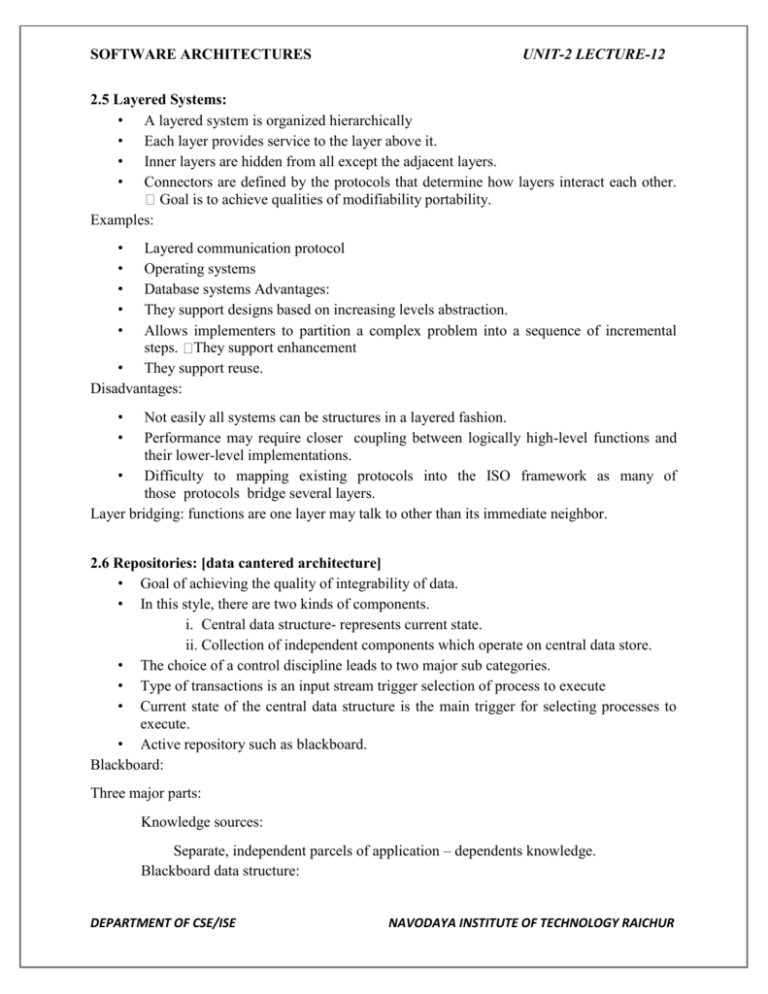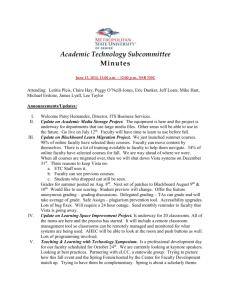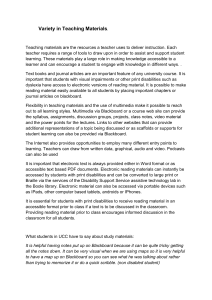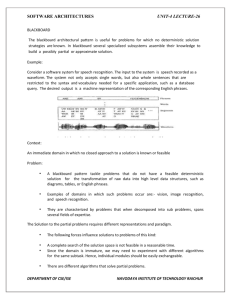- Navodaya Institute of Technology, Raichur
advertisement

SOFTWARE ARCHITECTURES UNIT-2 LECTURE-12 2.5 Layered Systems: • A layered system is organized hierarchically • Each layer provides service to the layer above it. • Inner layers are hidden from all except the adjacent layers. • Connectors are defined by the protocols that determine how layers interact each other. Goal is to achieve qualities of modifiability portability. Examples: • • • • • Layered communication protocol Operating systems Database systems Advantages: They support designs based on increasing levels abstraction. Allows implementers to partition a complex problem into a sequence of incremental steps. They support enhancement • They support reuse. Disadvantages: • • Not easily all systems can be structures in a layered fashion. Performance may require closer coupling between logically high-level functions and their lower-level implementations. • Difficulty to mapping existing protocols into the ISO framework as many of those protocols bridge several layers. Layer bridging: functions are one layer may talk to other than its immediate neighbor. 2.6 Repositories: [data cantered architecture] • Goal of achieving the quality of integrability of data. • In this style, there are two kinds of components. i. Central data structure- represents current state. ii. Collection of independent components which operate on central data store. • The choice of a control discipline leads to two major sub categories. • Type of transactions is an input stream trigger selection of process to execute • Current state of the central data structure is the main trigger for selecting processes to execute. • Active repository such as blackboard. Blackboard: Three major parts: Knowledge sources: Separate, independent parcels of application – dependents knowledge. Blackboard data structure: DEPARTMENT OF CSE/ISE NAVODAYA INSTITUTE OF TECHNOLOGY RAICHUR SOFTWARE ARCHITECTURES UNIT-2 LECTURE-12 Problem solving state data, organized into an application-dependent hierarchy Control: Driven entirely by the state of blackboard Invocation of a knowledge source (ks) is triggered by the state of blackboard. The actual focus of control can be in - knowledge source - blackboard - Separate module or - combination of these Blackboard systems have traditionally been used for application requiring complex interpretation of signal processing like speech recognition, pattern recognition. Figure 2.4: The blackboard 2.7 Interpreters • An interpreter includes pseudo program being interpreted and interpretation engine. • Pseudo program includes the program and activation record. • Interpretation engine includes both definition of interpreter and current state of its execution. Interpreter includes 4 components: 1 2 3 4 Interpretation engine: to do the work Memory: that contains pseudo code to be interpreted. Representation of control state of interpretation engine Representation of control state of the program being simulated. Ex: JVM or “virtual Pascal machine” DEPARTMENT OF CSE/ISE NAVODAYA INSTITUTE OF TECHNOLOGY RAICHUR SOFTWARE ARCHITECTURES UNIT-2 LECTURE-12 Figure 2.5: Interpreters Advantages: Executing program via interpreters adds flexibility through the ability to interrupt and query the program Disadvantages: Performance cost because of additional computational involved DEPARTMENT OF CSE/ISE NAVODAYA INSTITUTE OF TECHNOLOGY RAICHUR




